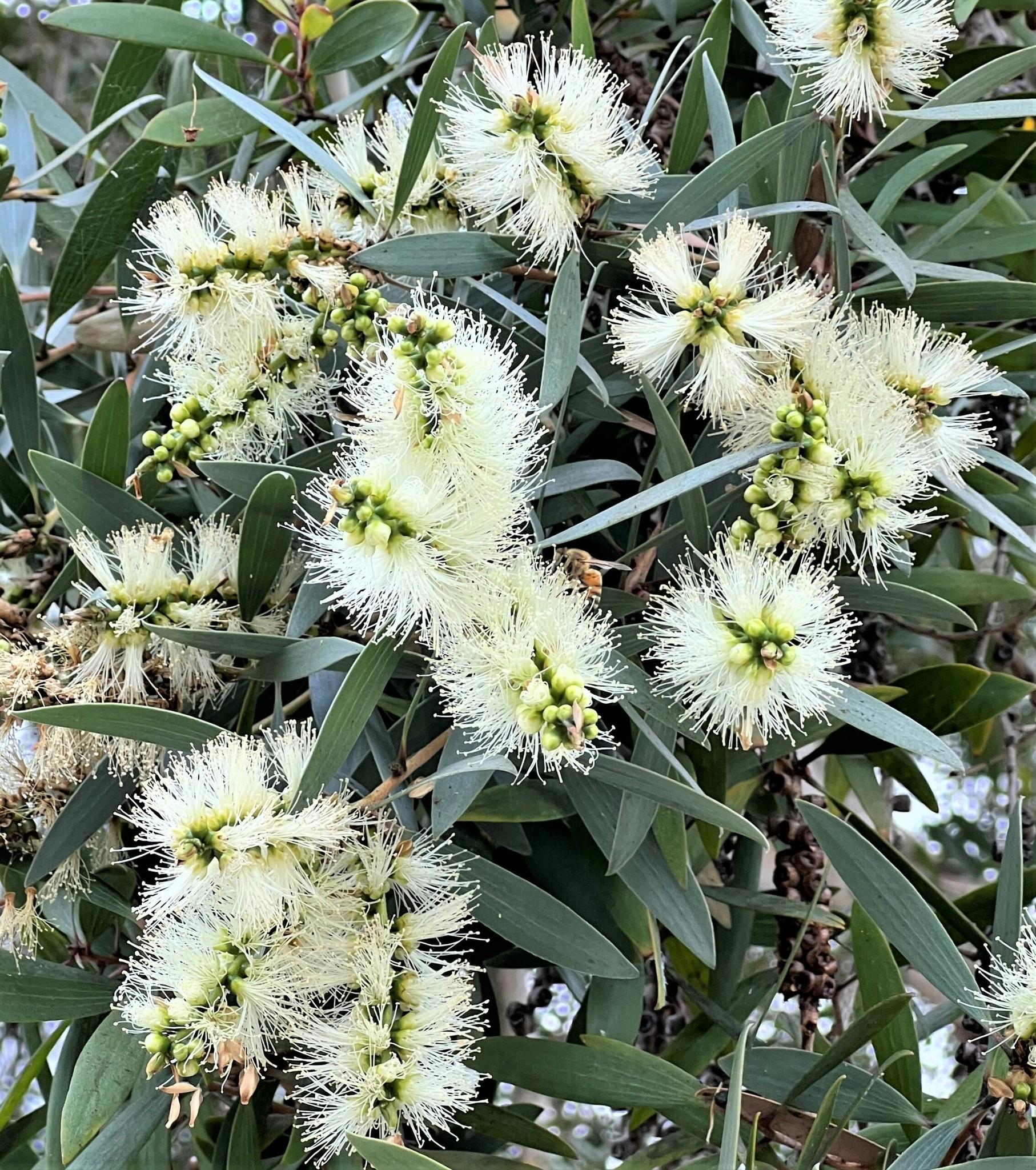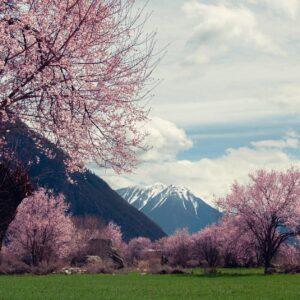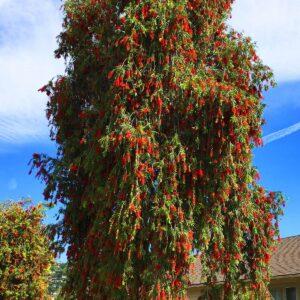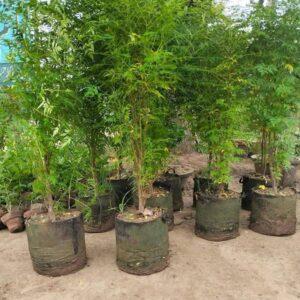Melaleuca quinquenervia“The resilient evergreen **Melaleuca quinquenervia**, commonly referred to as niaouli or the broad-leaved paperbark, is indigenous to Australia and several regions of the South Pacific. It is distinguished by its creamy-white bottlebrush blooms and its papery bark.
**Description**
Height: 8 to 15 meters on average, sometimes up to 25 meters
Lance-shaped, fragrant leaves with five noticeable veins
– Bark: Thick, spongy, and layered like paper, frequently utilized in traditional rituals – Flowers: Cream to white, grouped in dense, cylindrical spikes; bloom from late spring to autumn
**Conditions of Growth**
Sunlight: Can withstand some shade but prefers full sun.
Soil: Adapts to a variety of soil types, particularly sandy, moist, or poorly drained soils.
It thrives in warm, humid settings and is hardy in USDA zones 9–11. It can withstand both dry and wet circumstances, making it perfect for wetlands and flood-prone locations.
**Maintenance and Care**
Once established, water sparingly; after extended dry spells, water.
Pruning: It can be done to control size or preserve shape.
Fertilizer: In fertile soils, it is usually not necessary.
Generally resistant to pests and diseases, dry soils should not be overwatered to avoid root problems.
**Uses**
Ecological: Encourages pollinators such as bees and birds that consume nectar.
Ornamental: Because of its durability and distinctive bark, it is used in landscaping.
Medicinal: Niaouli oil, which is extracted from leaves, has antibacterial and anti-inflammatory qualities.
Cultural: Indigenous Australians have long utilized bark to line dwellings and wrap food.
Because of its quick proliferation and capacity to displace native plants, it is regarded as invasive in some areas, especially Florida. Outside of its natural area, appropriate management and cultivation are crucial.”





Reviews
There are no reviews yet.